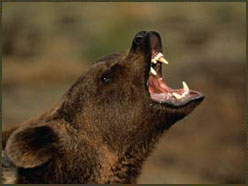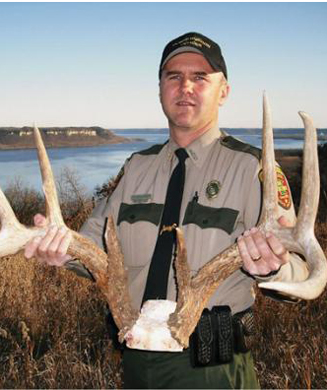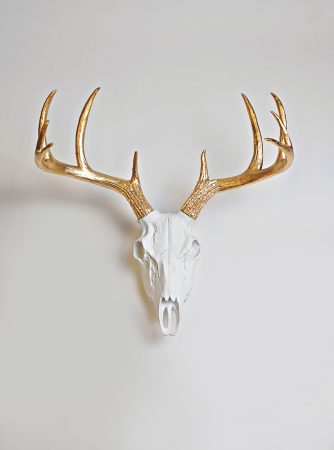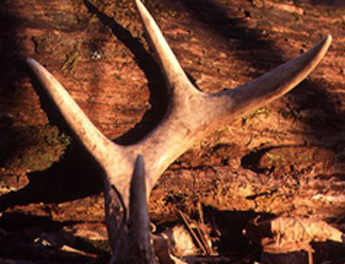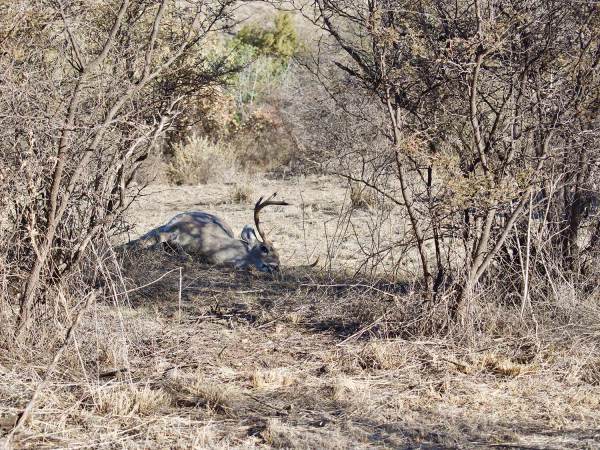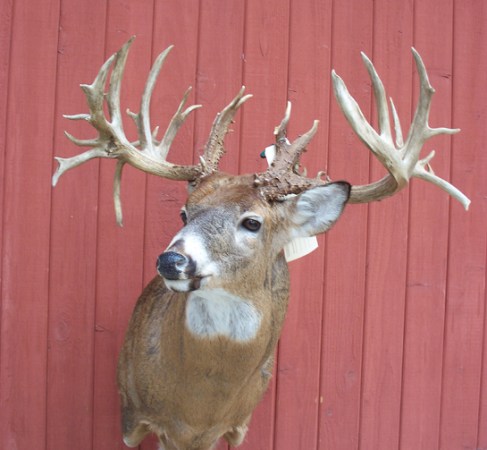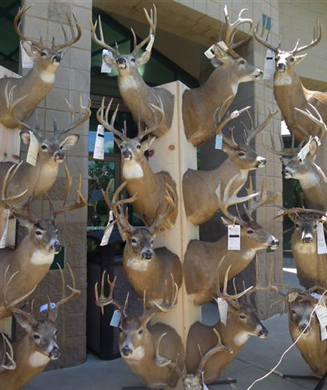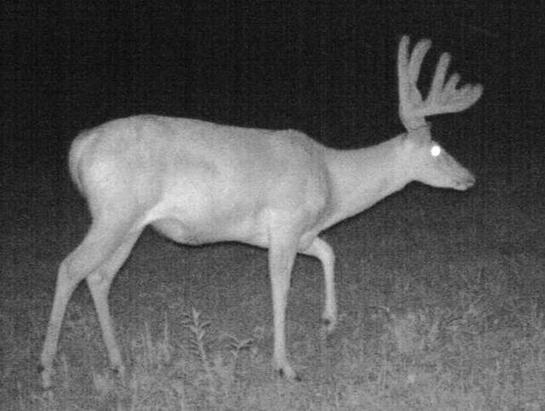Current laws prohibiting the sale of body parts from legally taken black bears are helping to promote bear poaching in North America. Inflated reports from some law-enforcement officers and the media about how much money poachers stand to make from selling bear parts only add to the problem. If the true value of a poached bear were publicized and the parts from bruins taken legally were used to supply the demand in Asian countries, the incentive for poaching would be greatly reduced.
The reason the demand for bear parts has not diminished and probably never will is that their use is an important element of Asian culture. Bear gallbladders, for example, and other animal parts have been key ingredients in Asian medicines and aphrodisiacs for centuries. Their use in these potions is so deeply ingrained in the culture that they are considered necessities. And efforts to change those traditions have met with little success. In similar circumstances, the total ban on trade in rhinoceros and tiger parts, for instance, has failed to have significant impact on consumer demand for them in Asia.
Where it’s against the law to sell the parts from legally taken bears, which includes much of North America, most hunters don’t bother to salvage those parts. (Only Idaho, Maine, New York, Pennsylvania and West Virginia allow the sale of gall from bears taken legally in state. Connecticut, Louisiana, New Jersey, North Dakota, Oklahoma and Rhode Island allow the sale of gall taken legally out of state. Nova Scotia and Saskatchewan allow gall sale.) That cuts off a potential supply from bears that are already dead. Yet, to meet the demand in Asia, additional bears are killed illegally by poachers.
An estimated 40,000 to 50,000 black bears are taken legally by hunters every year in the United States and Canada. If the parts from these bears could be used to supply the Asian demand, the black market would cease to exist.
With most game, hunters and trappers are encouraged to utilize as much of the animal as possible. Antlers, hides and even hooves of many big-game animals are often used to make mementos of the hunt, and the meat provides plenty of healthy meals. In fact, hunters are often rightfully criticized by other hunters if they waste any of the game they bag. When it comes to bears, however, the waste of valuable parts of those animals is encouraged, if not mandated, by law.
What better use can the parts of a legally taken animal have than to save the lives of animals that might otherwise be killed illegally?
Granted, the number of bears taken illegally for their parts is often grossly overestimated. At a symposium on the trade of bear parts in Seattle in March 1997, G.K. Winterton, manager of the Enforcement Section of the Ontario Ministry of Natural Resources, noted that fewer than 200 black bears across Canada were reported to have been illegally harvested for their parts. In the United States, the total annual number of black bears taken illegally numbered fewer than 200 through 1990, according to the book Status, Management and Commercialization of the American Black Bear, published by TRAFFIC USA and the World Wildlife Fund in 1995. The unreported illegal kill for 1991 in the U.S. was estimated at less than 500. Yes, these numbers are relatively small, but they could be further diminished by a simple change in the law.
Since a much higher number of bruins are legally bagged by hunters every year, doesn’t it make more sense for legal animals to be used to supply the parts trade? Black-market prices for items that are in demand are inevitably higher than for those that can be sold legally. Yet the black-market prices are still not as high as most people assume (see “What’s a Poached Bear Worth,” next page). Legalization of the trade in bear parts from animals taken by ethical hunters would reduce prices paid for those parts even further, short-circting the prime incentive for poaching.
There are at least two ways that the parts from legally taken black bears could be incorporated into a plan to reduce bear poaching. The sale of parts should be legalized so that licensed hunters can sell them directly to buyers. Trappers already sell the pelts and some parts from furbearers they catch, so this concept is nothing new. It’s also currently legal to sell elk and deer antlers to supply the oriental medicinal trade. Powdered antler is an ingredient in traditional medicines just as bear parts are, and the antlers from elk raised on commercial farms specifically for that purpose now supply much of that demand. The antlers shed by wild elk and deer contribute to the market, too.
An alternative to allowing hunters to sell bear parts directly is a plan that would permit state and provincial agencies, such as the Department of Natural Resources, to market the parts. This would ensure adequate controls. Hunters could be asked to donate parts such as gallbladders to the DNR as a means of discouraging bear poaching for the same parts.
However, some type of incentive would probably encourage more hunters to participate in a “Parts to Reduce Poaching Program.” Refunding the cost of a resident bear license would be an adequate incentive. Plenty of publicity establishing the value of a bear gallbladder at $13 (the cost of a resident Michigan bear license) would certainly diminish the profit motive in poaching. Marketing of bear parts by state agencies would not only contribute to a reduction in poaching, but would generate much-needed revenue to help fund law enforcement, research and/or wildlife management.
A number of years ago, the Michigan DNR Law Division got involved in the fur trade during an undercover operation as a means of gauging the traffic in illegal furs and animal parts. Many other states have employed similar undercover operations. Getting agencies involved in the bear parts trade would be even more worthwhile.
Laws prohibiting the sale of bear parts in some states and Canadian provinces have been enacted during recent years with the well-intentioned idea that they would help protect black bears in North America and Asia from poaching. Lawmakers reasoned that if the supply of bear parts could be eliminated, the demand for them would diminish. While that certainly has not happened, the supply of parts from legally taken bears has been further restricted.
During recent years, claims that the illegal trade in bear parts is increasing are largely due to the fact that it is now illegal in more places than it used to be, and not necessarily because of an increase in poaching. For example, many violations now involve the sale or transport of parts from animals taken in places where the practice used to be legal.
In the early 1990s, North American black bears were listed under the Convention on International Trade in Endangered Species Treaty (CITES), not because they are endangered, but because several species of Asian black bears are. The gallbladders from all black bears are similar, so CITES permits have been required for the import or export of bear parts from Canada and the United States to eliminate any chance of confusion between parts from North America and Asia.
Hunters from the United States who shoot a black bear in Canada, for example, must file a CITES permit with customs agents to bring any or all of the animal, including the gallbladder, into the U.S. The same permits are required to export bear parts from either country. Those permits can be used to monitor and control the trade of parts from legally taken black bears. That’s what they were designed for and it’s time to take advantage of them.
What Is a Poached Bear Worth?
One of the factors that contributes to the poaching of black bears is the misconception that poachers can make thousands of dollars from a single carcass. After parts have been processed, and have changed hands many times before reaching their final destination in Asia, they may fetch thousands of dollars, but poachers will seldom, if ever, earn anywhere near that amount.
West Virginia is one of the states where the sale of bear parts is legal. Each year, a sealed-bid auction is conducted by that state for the sale of bear carcasses in its possession (nuisance animals, road kills and illegal kills that have been seized), excluding gallbladders. According to TRAFFIC USA, the prices paid for entire black bear carcasses during the 1995 auction was $200. Prices paid for bear hides ranged from $45 to $125. Bear skulls sold for $10 to $13 and feet went for $10.
The going price for black bear gallbladders in West Virginia, according to one buyer, is $45 to $50. Considering the highest price paid for each item, a black bear was worth a maximum of $398 in that state during 1995.
TRAFFIC USA’s Andrea L. Gaski also presented figures on the prices paid for black bear gallbladders from various states and provinces at the Second International Symposium on the Trade of Bear Parts in Seattle in March 1997. Predictably, the lowest prices paid for these valued parts came from jurisdictions where trade is legal, and the highest prices came from those where trade is illegal.
Even where the highest prices are paid for bear parts, the value of a poached bear would be between $600 and $800. That’s not much incentive when weighed against the risks. If caught, a poacher could lose all equipment involved in the violation, including firearms and vehicles. Fines, court costs and restitution for the animal could total thousands of dollars. Poachers could also face up to a year in jail. make thousands of dollars from a single carcass. After parts have been processed, and have changed hands many times before reaching their final destination in Asia, they may fetch thousands of dollars, but poachers will seldom, if ever, earn anywhere near that amount.
West Virginia is one of the states where the sale of bear parts is legal. Each year, a sealed-bid auction is conducted by that state for the sale of bear carcasses in its possession (nuisance animals, road kills and illegal kills that have been seized), excluding gallbladders. According to TRAFFIC USA, the prices paid for entire black bear carcasses during the 1995 auction was $200. Prices paid for bear hides ranged from $45 to $125. Bear skulls sold for $10 to $13 and feet went for $10.
The going price for black bear gallbladders in West Virginia, according to one buyer, is $45 to $50. Considering the highest price paid for each item, a black bear was worth a maximum of $398 in that state during 1995.
TRAFFIC USA’s Andrea L. Gaski also presented figures on the prices paid for black bear gallbladders from various states and provinces at the Second International Symposium on the Trade of Bear Parts in Seattle in March 1997. Predictably, the lowest prices paid for these valued parts came from jurisdictions where trade is legal, and the highest prices came from those where trade is illegal.
Even where the highest prices are paid for bear parts, the value of a poached bear would be between $600 and $800. That’s not much incentive when weighed against the risks. If caught, a poacher could lose all equipment involved in the violation, including firearms and vehicles. Fines, court costs and restitution for the animal could total thousands of dollars. Poachers could also face up to a year in jail.
